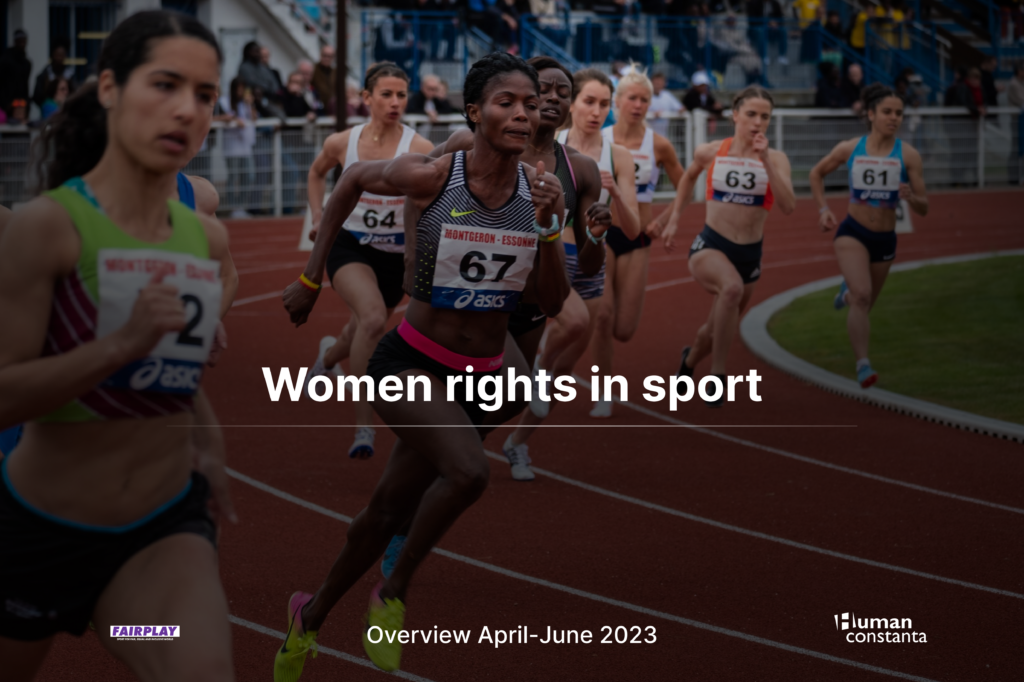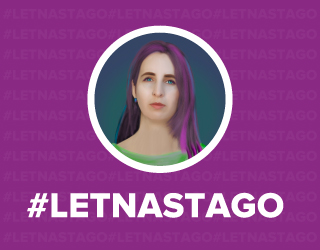
In the world of women’s sports, there is a concerning trend regarding the right to health. One such example is the high mortality rate among women during pregnancy and childbirth, with dark-skinned women in the United States dying more frequently than light-skinned women. American track and field athlete and Olympic champion Tori Bowie died due to childbirth complications.
A survey by a California university shows that medical professionals often do not listen to the preferences of women, especially dark-skinned women, during childbirth. Ignoring the opinions of pregnant women increases the risk of death and complications for both mothers and their children. Bowie’s teammates spoke out after her death, highlighting the issue related to stereotypes about dark-skinned women in society, especially in the medical field. This further exacerbates existing inequalities and violates fundamental human rights, including the right to health and the right to life.
Female footballers are frequently faced with one of the most severe injuries for athletes — anterior cruciate ligament (ACL) injuries. The captain of the England national team and a player for FC Arsenal, Leah Williamson, is missing the Women’s World Cup due to an ACL injury. Williamson shared an emotional post on her Instagram. She is the third footballer to suffer an ACL injury at FC Arsenal in the last six months. Beth Mead and Vivianne Miedema also faced the same problem. Over the past two years, five more female footballers suffered the same injury and will not be able to participate in the tournament. Millie Bright managed to recover in time for the World Cup and will take Leah Williamson’s place as the captain of the England national team. However, she also experienced the same problem earlier.
According to statistics, female athletes experience ACL tears 2-8 times more often than their male counterparts. According to one study, 1 in 19 female footballers tears their ACL. Among the factors that contribute to the increased risk are physiological differences between men and women, environmental conditions, hormonal fluctuations during the menstrual cycle, genetics, and biomechanics. Research on this topic has existed for about 20 years, but the problem remains relevant. While research can reveal the essence of the problem and statistics, it does not provide a solution. To some extent, there is normalisation of this injury among women, which is absolutely unacceptable and jeopardises the health, emotional well-being, and careers of female athletes. An ACL injury is challenging in terms of recovery — athletes rarely manage to return to the same level of play they had before the injury.
FIFA has developed an injury prevention programme called “The FIFA 11+” for both men and women, which includes dynamic warm-up exercises for athletes. However, many female athletes neglect this preventive programme due to a lack of time or access to resources at socio-economic and gender levels. FIFPro conducted a study in which 362 female footballers participating in continental championships took part. According to the results, 54% of them did not undergo pre-tournament examinations, 70% did not have electrocardiograms (ECGs) before the tournament, and only 40% could call themselves professional footballers. The economic aspect of the problem also relates to the high cost of surgeries – as mentioned in the previously cited article from Orthopedics and Orthopaedic Surgery, the cost of surgeries in 2021 “may exceed $650 million annually.” Additionally, attention should be given to the qualifications of medical personnel, the quality of equipment, and the ratio of support staff to players.
It is evident that research on women’s sports injuries needs to be conducted not only at the biomechanical level but also in terms of quality infrastructure and investments in women’s sports. This is a serious and complex issue that touches on questions related to the violation of the human right to health, the right to work (safe and equal working conditions), and protection against discrimination.
Read analytics on sports and human rights for April-June 2023
The European Club Association conducted a survey among 350 female players from 16 leading European clubs. 82% of the respondents experience constant discomfort when wearing football boots, and one-fifth of them customise their footwear using special insoles or by cutting holes in the heel to avoid blisters. The footwear market is built on a unisex approach but primarily caters to white men. While there is no direct research showing a correlation between improperly fitted footwear and the number of ACL injuries, according to Katrine Kryger, a lecturer at the University of St. Mary’s in London, women’s football games are often played on low-quality fields, and the use of footwear not designed for the game or not suitable physiologically increases the risk of injury.

In their turn, Nike introduced a model of boots specifically designed for women. The company spent over two years researching, testing, and designing such footwear, listening to the feedback of female players. Nike’s experience should serve as an example for other sports brands in terms of a non- discriminatory and comprehensive approach to female athletes’ requests and needs.
In a significant move, FIFA is selling the rights to host the men’s and women’s World Cups separately this year. However, FIFA President Gianni Infantino expressed his dissatisfaction with the unacceptable offers for media rights for the women’s tournament in five major European countries and threatened to ban the tournament broadcast. Later, on his Instagram, Infantino added that viewing of the Women’s World Cup is 50-60% of that of the men’s, while the broadcasting offers for the women’s tournament in the “big five” countries are 20-100 times lower, which he sees as a “slap in the face to all the great participants of the World Cup and to women worldwide.” It’s worth noting that the prize fund for this year’s Women’s World Cup is $150 million, three times higher than in 2019 and ten times higher than in 2015, but it still significantly lags behind the total prize money for the men’s tournament, which is $440 million.
In May 2023, the Italian Open tennis championship began, and within the first days of the championship, the issue of unequal pay between men and women came into sharp focus. The male champion receives $1.2 million, whereas the female champion receives $567,215. The total budget for all male participants amounts to $8.3 million, while for female participants, it is $3.88 million.

Both of these cases indicate a violation of the human right to fair and favourable conditions of work, particularly fair pay and equal remuneration for work of equal value; women should be guaranteed working conditions no less favourable than those enjoyed by men, with equal pay for equal work.
France’s highest administrative court supported the French Football Federation’s ban on wearing hijabs during football matches. The court issued this decision after footballers from “Les Hijabeuses” campaigned against the ban and filed a lawsuit against the federation. Such a ban contradicts FIFA’s recommendations, as FIFA officially allowed the wearing of head coverings for religious reasons during football matches back in 2014 (Rule 4 of the IFAB Laws of the Game). In this case, there is a violation of the freedom from discrimination and an infringement on the freedom of Muslims to express their beliefs and convictions.
Recently, disputes have intensified between the WNBA and the NCAA regarding NIL (Name, Image, and Likeness) deals, which pertain to the use of college athletes’ names, images, and likenesses in marketing and advertising activities, through which they can receive financial compensation. Thanks to NIL deals, college players can earn more than professional WNBA players, which has led some athletes to delay their transition to WNBA professional status. Breanna Stewart, a professional American basketball player, sees the cause of these disputes in broader issues. Women’s sports receive less than 5% media coverage, and female athletes should not be fighting over that 5%. They should be demanding “50 or 100 or whatever percent,” demanding more from the media and marketing companies in terms of visibility. The (in)visibility of women’s sports in the media remains a relevant and pressing issue, closely intertwined with problems related to equal pay, equal access, and investment in women’s sports.
During the analysed period, we also noted partnership initiatives aimed at promoting women’s football. Spotify in collaboration with London City Lionesses and She Plays Football have teamed up, aimed at providing opportunities for a new generation of girls to play football. The project’s goal is to “increase diversity in grassroots teams and provide unique opportunities for girls who aspire to play football.” For 600 girls from across Barnet, one of London’s 32 boroughs, the project offered free daily 1.5-hour football training sessions. These sessions were conducted by professional coaches, and players from London City Lionesses acted as special guests to motivate the girls to engage in football. The campaign also collaborates with local schools and helps identify areas in society where girls lack opportunities to participate in sports. In response to an open letter from the “Lionesses” (signed by all 23 players), the UK government announced its intention to provide equal access to football for all schoolgirls. While equal access to sports remains a challenge, initiatives like these are essential for increasing inclusion and gender equality.
Another interesting example is Nike’s announcement of a three-year agreement with Liga BBVA MX Femenil (the highest women’s football division in Mexico), and thus, the company became the league’s exclusive sports partner. Nike had a similar partnership experience with the NWSL. The company will support women’s football in Mexico both on and off the field by providing Mexican female footballers with innovative products, investing in development programmes for the new generation, and supplying leathers. Nike has long been working to develop women’s football in Europe and North America. However, investments like the one in Liga BBVA MX Femenil allow Mexican women’s football to compete with European football and create a global platform for it. Nike’s example demonstrates how to support athletes while expanding opportunities for their participation in competitions.
Despite some positive trends in women’s rights in sport in recent years, including the analysed period, issues such as unequal pay, low accessibility of sports for girls and women, insufficient investment, limited medical research, and consequently, a high level of injuries, still persist. The path to ensuring equal rights for women in sport is a complex and ongoing process that is part of a broader struggle for gender equality in society.
All stakeholders involved need to continue their work to raise awareness, collaborate to overcome barriers, and ensure long-term change. By promoting the values of gender equality and supporting the potential of girls and women in sport, we contribute to creating an inclusive environment both on and off the field.

